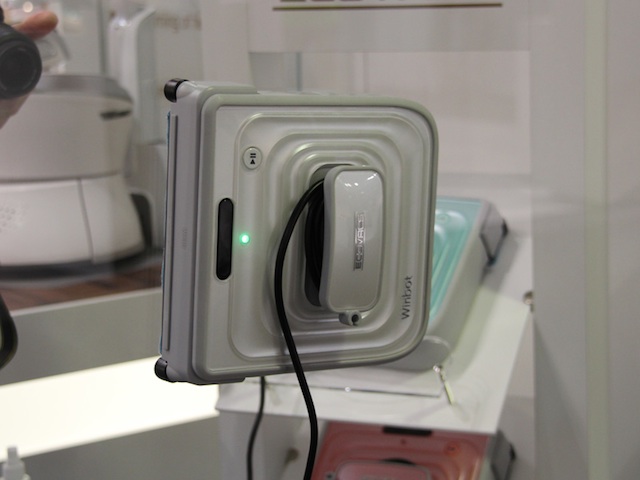Ahead the Ovations Speaker Showcase on Tuesday, I’ve been looking at robots as one of this decade’s trends.
What’s interesting is how our perception of robots has evolved over the last half century.
The idea of Robots in the 1950s and 60s were ones with human shapes – four legs, a torso, two arms, shoulders and a head – otherwise known as anthropomorphic. Lost in Space and the Day the Earth Stood Still are two good examples of those human like machines.

Today’s robots have much more utilitarian shapes, like the Winbot window cleaner pictured at the beginning of this post.
Many of the robots look like the machines we use today, mainly because they are today’s technology with the driver or operator replaced. A good example being the Google self driving cars.
The idea of a robotic car isn’t completely new though; the 1980s action series Knight Rider featured KITT, a robot car with an almost equally mechanical David Hasslehof as its sidekick.

More interesting still are the tiny robots who look, and act, like insects. Wait until these guys infest your internet fridge.
All of these technologies had to wait until computers became small and cheap enough to fit into the systems. In the 1980s a computer with the capabilities to run KITT or a Google Car would be the size of a large warehouse, today it can fit inside a cigarette packet.
Of course the real power for robots comes when computers talk to each other and form a collective intelligence. This is the Internet of machines.

Which brings us to Arthur C. Clarke’s and Stanley Kubrick’s 2001: A Space Odyssey and the 1980s vision of Skynet which gave birth to the Terminator.
Hopefully those visions of the future of network connected robot are just as misguided as those of 1950s movies.
If they aren’t, we’re in a lot of trouble.


Leave a Reply